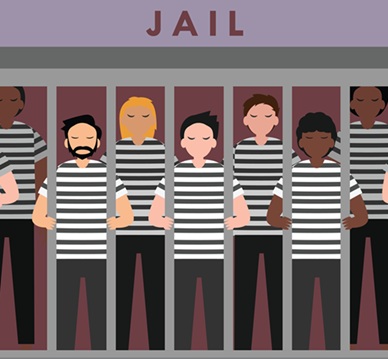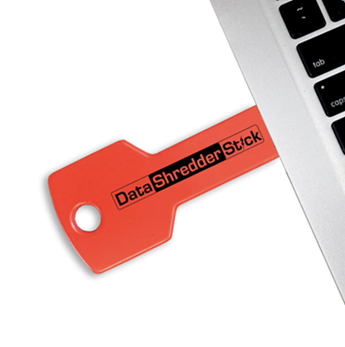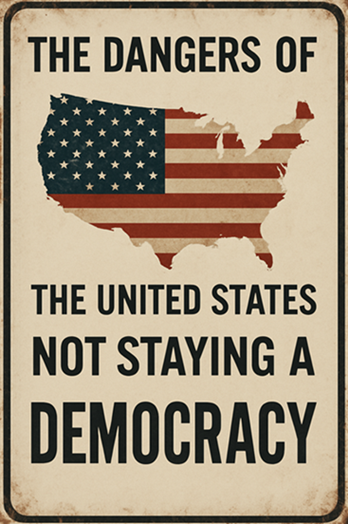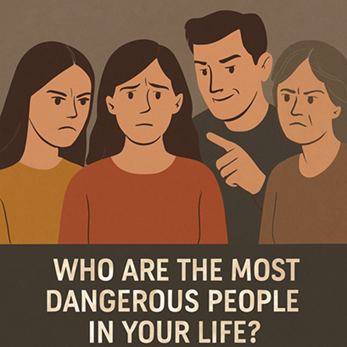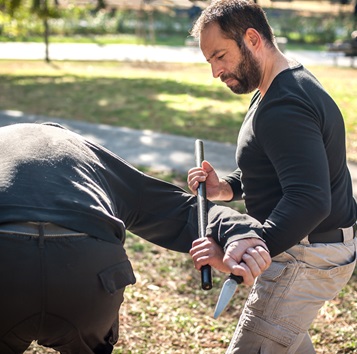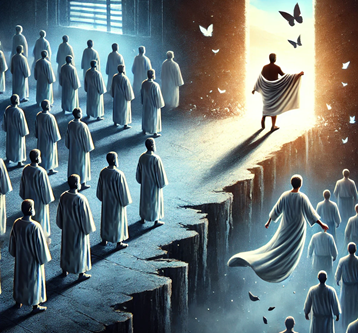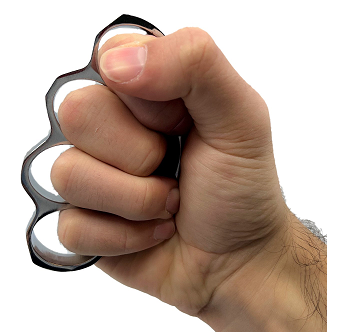Incarceration in America: Who and Why
 The United States has the highest incarceration rate in the world. With over 1.2 million people in state and federal prisons and nearly 2 million in the broader correctional system (including jails and probation), mass incarceration has become a defining issue of American criminal justice.
The United States has the highest incarceration rate in the world. With over 1.2 million people in state and federal prisons and nearly 2 million in the broader correctional system (including jails and probation), mass incarceration has become a defining issue of American criminal justice.
But not all groups are affected equally. Who actually goes to prison? What kinds of crimes are they being locked up for? And how do race, gender, age, and socioeconomic status play into these patterns?
In this post, we’ll explore the demographics of both the crimes that lead to imprisonment and the people who end up behind bars. We’ll look at data from the Bureau of Justice Statistics (BJS), the U.S. Census, and other reliable sources to shed light on the truth behind the numbers—and the social realities that drive them.
Part 1: What Crimes Are People Incarcerated For?
When people think of prison, they often imagine violent offenders—murderers, rapists, and armed robbers. While violent crime is a major reason people are incarcerated, it’s far from the only one.
Breakdown by Offense Type
According to the Bureau of Justice Statistics (BJS), here is a general breakdown of offense types for people incarcerated in state and federal prisons (as of the most recent data):
State Prisons (where most prisoners are held):
-
Violent crimes – 58%
(includes murder, rape, robbery, and aggravated assault) -
Property crimes – 15%
(includes burglary, larceny, fraud, and arson) -
Drug offenses – 14%
(includes possession, distribution, trafficking) -
Public order offenses – 11%
(includes weapons charges, DUI, immigration violations)
Federal Prisons:
-
Drug offenses – 45%
-
Weapons, explosives, arson – 20%
-
Immigration offenses – 10%
-
Fraud and white-collar crimes – 9%
-
Sex offenses – 6%
So while violent crime dominates in state systems, drug offenses are by far the most common reason for federal imprisonment.
Key Takeaway:
-
Violent crime drives state-level incarceration.
-
Drug and immigration-related offenses drive federal-level incarceration.
Part 2: Demographics of Incarcerated People
Now that we know what crimes people are locked up for, who exactly are these individuals? The demographic makeup of the prison population reveals longstanding inequalities.
1. Race and Ethnicity
Race is one of the most starkly visible disparities in the U.S. prison system.
According to 2022 data from the Prison Policy Initiative and BJS:
| Race/Ethnicity | % of U.S. Population | % of Prison Population |
|---|---|---|
| White | 59% | 30% |
| Black | 13% | 33% |
| Hispanic | 19% | 23% |
| Other (Asian, Native American, etc.) | 9% | 14% (combined) |
-
Black Americans are incarcerated at nearly 5 times the rate of White Americans.
-
Hispanic men are nearly 3 times more likely to be incarcerated than White men.
These disparities exist even after controlling for income and prior criminal history.
2. Gender
The prison population is overwhelmingly male:
-
Men make up about 93% of the prison population.
-
Women make up about 7%, but this figure has been rising in recent decades—particularly for drug and property offenses.
3. Age
The majority of people in prison fall between ages 25 and 44.
-
Young adults (ages 18–24) represent about 10–15% of prisoners.
-
Older adults (over 55) are a growing demographic due to longer sentences and lower parole rates.
4. Education Level
There’s a strong correlation between low educational attainment and incarceration:
-
About 65% of people in prison did not graduate high school.
-
Fewer than 5% have a college degree.
In contrast, only 12% of the general U.S. population lacks a high school diploma.
5. Socioeconomic Status
Most incarcerated individuals come from low-income or impoverished backgrounds.
-
Nearly 70% of those incarcerated were unemployed or underemployed prior to arrest.
-
People living in neighborhoods with high poverty rates are far more likely to be arrested and incarcerated.
Part 3: Race, Crime, and Systemic Factors
It’s tempting to interpret these demographic disparities as reflective of differences in criminal behavior—but that would be a mistake.
Multiple studies have shown that White, Black, and Hispanic individuals use and sell drugs at roughly equal rates, for example—yet Black and Hispanic people are arrested and incarcerated for drug offenses at much higher rates.
Why? The answers are complex and include:
-
Policing practices: Heavier police presence in poor, minority neighborhoods leads to more arrests.
-
Judicial discretion: Prosecutors may offer harsher plea deals to people of color.
-
Bail and pretrial detention: Poorer defendants (disproportionately Black and Hispanic) are more likely to be held pretrial, leading to worse outcomes.
-
Sentencing disparities: Studies show that Black defendants receive longer sentences than White defendants for the same crimes.
Case Study: The War on Drugs
The War on Drugs of the 1980s and 1990s disproportionately affected communities of color.
-
Crack cocaine (used more often in Black communities) carried much harsher penalties than powder cocaine (more common in White communities), despite being pharmacologically similar.
-
This led to tens of thousands of Black men being incarcerated for minor drug offenses—many for decades.
Part 4: Trends in Incarceration Over Time
The Rise
From the 1970s to the early 2000s, the U.S. prison population skyrocketed due to:
-
Harsher sentencing laws (e.g., mandatory minimums, three-strikes laws)
-
The War on Drugs
-
Expansion of private prisons
The Plateau
In the past decade, incarceration rates have leveled off, and in some states, they've begun to decline.
-
The national imprisonment rate dropped about 25% from its peak in 2009, but it’s still much higher than other wealthy nations.
-
States like New York, New Jersey, and California have seen the largest declines, often through reform legislation and diversion programs.
Part 5: Reentry and Recidivism
What Happens After Release?
Roughly 600,000 people are released from prison each year. Their challenges include:
-
Finding employment (many employers won’t hire people with felonies)
-
Securing housing
-
Reconnecting with family
-
Mental health and substance abuse issues
Recidivism Rates
The U.S. has one of the highest recidivism rates in the world.
-
Within 3 years, about 2 in 3 released individuals are re-arrested.
-
Within 5 years, over 75% are back in the system.
These rates are highest for:
-
Property offenders
-
Younger inmates
-
People with substance abuse issues
The facts about incarceration and demographics reveal that the U.S. doesn’t just have a crime problem—it has a justice equity problem.
Calls for reform have grown louder in recent years, spurred by:
-
The Black Lives Matter movement
-
Media coverage of police violence
-
Academic studies on mass incarceration’s impact
Promising Reforms Include:
-
Decriminalization of drug possession (Oregon, parts of California)
-
Cash bail reform
-
Restorative justice programs
-
Ban-the-box employment initiatives
-
Sentencing reform to reduce mandatory minimums
Still, lasting change will require:
-
Reinvestment in education and mental health care
-
Economic opportunities in vulnerable communities
-
A shift away from punishment-first policies
Conclusion
The U.S. prison system tells a story not just about crime, but about inequality, poverty, and systemic bias. While people of all races, genders, and backgrounds commit crimes, the consequences are not equally distributed.
Understanding the demographics of incarceration is essential for crafting a criminal justice system that is fair, effective, and just. It’s not just about who commits crimes—but about who gets caught, who gets punished, and who gets a second chance.
As a society, we must ask: Are we locking people up to protect public safety—or because we’ve failed to provide better alternatives?
Sources:
-
Bureau of Justice Statistics (bjs.ojp.gov)
-
Prison Policy Initiative (prisonpolicy.org)
-
Pew Research Center
-
The Sentencing Project
-
U.S. Census Bureau
Company Info
Customer Service
Product Information
- TASER® and Stun Devices Regulations by State
- TASER® Safe Escape Product Replacement Guarantee
- TASER® Comparison Chart
- TASER® User Manuals
- TASER® Warranty Info
- Byrna Product Catalog
- PepperBall Manuals & Spec Sheets
- Pepper Spray Laws
- Air Gun Laws
- States that Restrict Automatic and Butterfly Knives
- Our Print Catalog
























